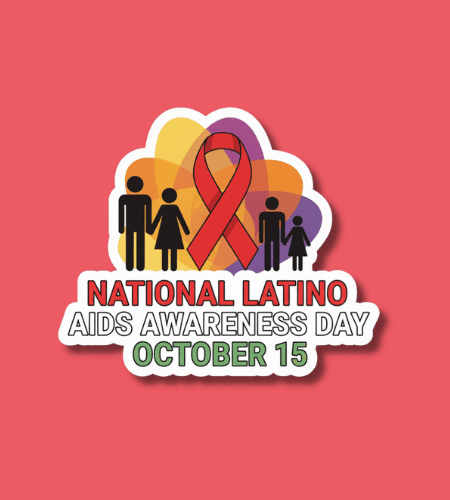National Latino AIDS Awareness Day—also known by its more inclusive title National Latinx AIDS Awareness Day (NLAAD)—is observed every October 15. It is a day dedicated to shining a light on the impact of HIV/AIDS in Latino and Latinx communities, promoting HIV testing, reducing stigma, and mobilizing efforts toward treatment, prevention, and equality in health access.
Table of Contents
History of National Latino AIDS Awareness Day
The first NLAAD was launched in 2003 by the Latino Commission on AIDS in collaboration with the Hispanic Federation. It was created to coincide with the close of Hispanic Heritage Month, to emphasize that HIV/AIDS is an issue deeply affecting Latino communities and deserves focused attention. Over the years, it has grown from a handful of local events into a national movement, with hundreds of organizations, health departments, and community groups participating in awareness and outreach campaigns.
Each year, NLAAD is coordinated nationally (for example, via campaign toolkits, themes, and media support), but the actual events are locally driven. Communities adapt activities to their needs—organizing HIV testing drives, educational workshops, culturally relevant events, and outreach tailored to language and cultural differences.
Why is National Latino AIDS Awareness Day important?
HIV doesn’t affect all populations equally. Latino and Latinx communities in the U.S. are disproportionately impacted by new HIV diagnoses compared to their share of the population. Many face barriers such as limited access to care, language or cultural obstacles, stigma, immigration concerns, and lack of tailored services. NLAAD shines attention on those inequities, urging communities, public health systems, and policy makers to do better.
But it’s not just about statistics. At its heart, the day aims to humanize the issue—reminding us that behind every number is a person, with family, hopes, fears. By encouraging open conversation, testing, and supporting those on treatment, NLAAD helps break down shame and fear. It offers hope that with awareness and action, more lives can be saved, more transmissions prevented, and more communities strengthened.
- It raises awareness of HIV’s impact in Latino/Latinx communities
- It promotes HIV testing and early diagnosis
- It encourages people living with HIV to stay in care and treatment
- It fights stigma, discrimination, and misinformation
- It strengthens community-based efforts and partnerships
How to Observe National Latino AIDS Awareness Day
One of the most concrete things you can do is help make HIV testing accessible and visible. Partner with local health clinics, support or volunteer at testing events, or help spread information about where people can get a free or confidential test. If you’re part of a community organization, school, or faith group, host discussions, share stories, or invite speakers who live with HIV to help demystify the experience. Use social media thoughtfully—share accurate resources, infographics, and reminders using campaign hashtags (such as #NLAAD). Encouraging someone to talk to a health provider, even if they don’t feel at risk, can be a lifesaving nudge.
For those living with HIV, this day is also an occasion to reaffirm your own strength—connect with support groups, check in with your care team, or simply know that your voice matters. And for allies, being present, sharing factual information, and standing against stigma is powerful. Even small gestures—listening, offering support, or helping someone find care—make a difference.
- Share resources or locations for local HIV testing
- Host or attend education events or community talks
- Use social media to spread awareness and accurate information
- Reach out to someone you know with HIV and offer support
- Partner with organizations to volunteer, donate, or help in outreach
National Latino AIDS Awareness Day Dates Table
| Year | Date | Day |
|---|---|---|
| 2025 | October 15 | Wednesday |
| 2026 | October 15 | Thursday |
| 2027 | October 15 | Friday |
| 2028 | October 15 | Sunday |
| 2029 | October 15 | Monday |
Subscribe to our newsletter and never miss a holiday again!

